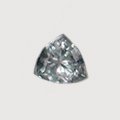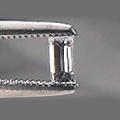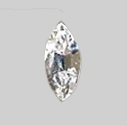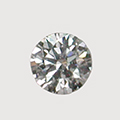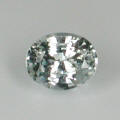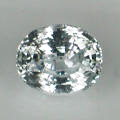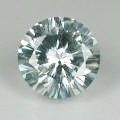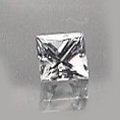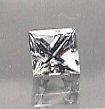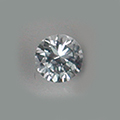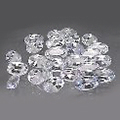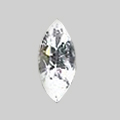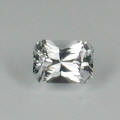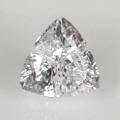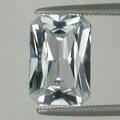|
White or "Colorless" Sapphires have a great deal of brilliance, are attractive, durable and well priced. Gem quality Colorless Sapphires are not common. In fact they are very difficult to obtain, so prices should continue to move upward in the market. Some Colorless Sapphires have a very light tint of Blue, Yellow, or Pink but are still considered colorless.
Colorless (white) Sapphire has been used as a substitute for Diamond for years. We often suggest Colorless (white) Sapphire as the accent stones in jewelry pieces, and the larger gems make excellent main stones in pendants and rings, but we do not recommend it if you expect it to be as brilliant as a diamond. White Sapphire is a natural precious gem, and as such, stands on it's own merit as a beautiful precious gemstone. In recent years Gem Quality White Sapphire has become more and more of a very rare commodity. Brilliant and Clean Colorless (white) Sapphires are gaining great popularity
as a highly valued Collectors Gemstone.
FAQ - What is the difference between White Sapphire and Diamond?
First of all, a natural White Sapphire is a beautiful gem on it's own. There is only one gem that looks like a Diamond, and that is a Diamond. There are several clear colorless gems that resemble a Diamond, but close examination by a trained gemologist will easily distinguish the difference. Diamond has a very high refractive index (2.417-2.419) and strong dispersion (0.044) to give it great brilliance and fire. The refractive index for Colorless (white) Sapphire is a bit lower (1.766-1.774) and it has less dispersion (0.018) which means it cannot perform exactly like a Diamond. A gem quality Colorless (white) Sapphire that is well cut is a very brilliant gemstone, but for the reasons I mentioned above it does not have the same fire as a Diamond. By fire, I mean when you look at a Diamond, you see the colors of the rainbow in the faceting in natural daylight, you can even reflect the sunlight hitting a diamond and the colors of the rainbow will appear on the surfaces around you. Whereas, with the White Sapphire, you see white light reflected in the faceting. The gem closest to a Diamond in brilliance and fire is the Colorless Zircon, this gem has a very high refractive index (1.777-1.987) and strong dispersion (0.039). Gem quality White Zircon is a little less in price than a gem quality White Sapphire. There is a drawback with Zircon, however, that is it's hardness. Diamond is very hard (10) and can cut or scratch most all other gems and glass. Sapphire is next on the hardness scale (9) and can scratch most other gems, except Diamond. Zircon has about the same hardness as Tanzanite (7) and can only scratch a few other gems, but it cannot scratch Sapphire or Diamond. Zircon can be easily damaged if prong set on a Ring since it is sensitive to knocks and abrasions. Men particularly are very hard on their jewelry and a Zircon can be easily damaged if precautions are not observed. When building a Ring with a Zircon we recommend a full bezel and the stone recessed in the bezel, this way the gem is not subject to the typical knocks and abrasions one would normally encounter. This brings us back to the White Sapphire. Looking at the fact it is a very brilliant and beautiful natural gem, as well as very hard and durable for jewelry, and it is colorless, makes the White Sapphire a very suitable choice if the budget does not allow for a Diamond and yet you still want a beautiful natural gemstone.
TREATMENTS - (see Sapphire)
CARE - It is usually safe to clean Sapphire in an UltraSonic Cleaner, and generally safe to use a steamer. The best practice is to use an Ionic Cleaner and/or warm soapy water and a soft brush as the best way to clean your Sapphire Jewelry.
|



 Contact
Contact


